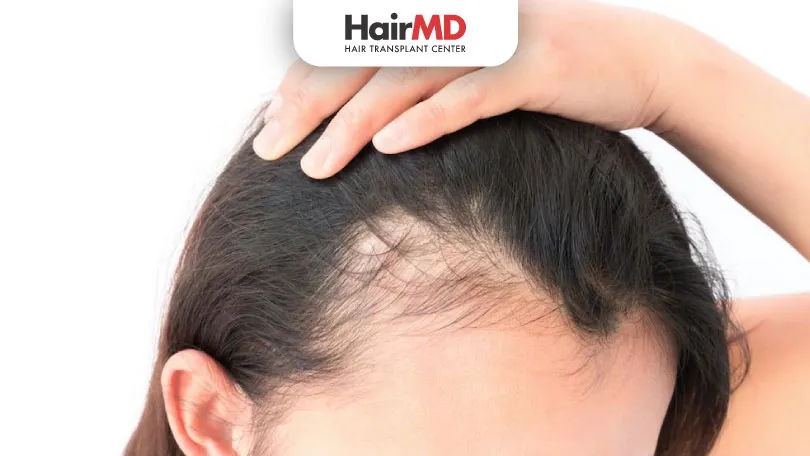3rd June, 2022

Wondering if a hair transplant is the right solution for female hair loss? Discover how this treatment can work for women, addressing thinning and patchy areas, and explore its effectiveness, recovery process, and success rates. Learn what makes a good candidate for a hair transplant and what results women can expect.
We all know how hair transplant has gained a booming success in the cosmetic field. As hair transplant already gained success in male pattern hair loss, recently researchers say women are also a good candidate for hair transplant. If you are also thinking to get a transplant done, but you also have a question in your mind. Does hair transplant work for women? Yes, indeed it works I will give you all the information related to a hair transplant for women.
What’s covered in the article?
- Good Candidates For Hair Transplant
- Who Can Get It Done?
- Hair Transplant Procedures
- Risks Of Hair Transplant Surgery
- Not A Good Candidate For Hair Transplant
- Conclusion
Good Candidates For Hair Transplant
When women are a good candidate for hair transplant? Let’s check the points, before going for hair transplant surgery.
- Age: Females should be 30 years and above as by then they have good stability in hair fall.
- Health conditions: Medically fit with a healthy immune system is good for undergoing any surgery. If you are on any long-term medication, discuss it with your surgeon.
- Lifestyle: Living a healthy lifestyle, a balanced diet, regular exercise, and stress relaxation therapy will help you for better recovery, less swelling, lower risk of infections.
- Hair loss classification: The condition of hair loss and the donor hair available is also important to get a better outcome.
- Practicing aftercare: Following the instructions given by the surgeon, correctly will prevent infection and fasten your recovery period. Hair loss can be classified using the Ludwig Scale for women and the Norwood Scale for men.
Who Can Get It Done?
Do you know that about 2% to 5% are only benefited
- Women suffering from hair loss due to mechanical or traction alopecia (non-hormonal) can also go for hair transplant.
- Alopecia marginalis, a condition that looks very similar like traction alopecia, women can go for Hair transplant.
- Women who had previous cosmetic or plastic surgery and are concerned about hair loss around incision sites.
- Women who have a distinct pattern of baldness, similar to male pattern baldness, involving a receding hairline, vertex thinning, and a stable donor area.
- Hair loss due to trauma, including burn victims, chemical burns, scarring from accidents, etc, women can go for hair transplant treatment.
Hair Transplant Procedures
There are two methods of hair transplant.
- Follicular Unit Transplantation (FUT): We all know in this treatment, 6-10 inch strip of skin is removed from the back of your head for transplant. Then divided into 500-2000 tiny grafts. Then from the strip again the follicles are removed and implanted to the bald area.
- Follicular Unit Extraction (FUE): We all know that in this FUE hair transplant method, individual hair follicles are extracted one by one using small straight punches. The grafts are then transplanted into the balding area of the scalp. It’s important to place the grafts in a zigzag manner for the regrowth of hair in the balding area to appear like natural growth.
Risks Of Hair Transplant Surgery
Let’s check the risk factors for hair transplant surgery.
- Infection
- Scarring
- Excessive bleeding
- An unnatural hair pattern
- Death of hair follicles
The most crucial part of a hair transplant surgery, ensure its success with the hair transplant surgeon. The expertise, ability, skill, and experience of the doctor is most significant in determining the end result. He must also possess the aesthetic skills to place the grafts according to the patient’s facial profile, age, and sex, restoring to you your hair and self-esteem.
In some cases it’s also seen, women are not a suitable candidate for hair transplant procedures. There are various factors that you need to check with your surgeon.
Not A Good Candidate For Hair Transplant
Why are most women not good candidates for hair transplant?
Hair transplant is a surgery that moves hairs you already have from an area (donor area) to fill another area with thin or no hair (recipient area). While hair transplant surgery is a great option for a majority of the men and women.
- Donor area:
We all know in men the donor sites are stable, this means that the hair follicles in those areas are not affected by the androgen hormone called DHT(dihydrotestosterone). DHT is responsible for shrinking of the hair follicles. Whereas the donor area in females is usually unstable. The reason for this is, that in males, the pattern of baldness involves thinning of hair on the top and crown of the head and receding hairline. The back and sides of the head are normal and can act as stable donor sites. But in Female pattern baldness, which involves diffuse thinning of hair all over the scalp. Which makes all areas unstable and unsuitable for transplant.
- A pattern of baldness and volume of hair:
Receding frontal hairline is a feature only in male pattern baldness. This can easily be rectified by transplanting hair from one area to another. This isn’t a problem for women. They are more concerned about the overall thinning and volume, especially from the top and back.
- Recipient area:
The hair loss in women is more spread out, the recipient area is larger. The greater the recipient area, the larger the donor area needs to be. Then the operation will take longer and the treatment will cost more. Besides, longer hair can also be harder to work with.
- Effective non-surgical treatments:
Men experience severe balding, indicating that the follicles are dead. Thus any other treatment except for hair transplant wouldn’t work. But balding rarely occurs in women, indicating that non-surgical hair loss treatments can inhibit hair loss & stimulate regrowth.
Do You Know?
Nearly 250 Patients Visit HairMD
Everyday For Various Hair Concerns?
(You are one click away from flawless skin)
Meet Our Dermatologists
Conclusion
In conclusion, while hair transplants can be an effective solution for women experiencing hair loss, individual factors such as the pattern and extent of hair thinning play a crucial role in determining success. Consulting a specialist is essential to assess your eligibility and set realistic expectations for the procedure. With the right approach, many women can regain fuller, natural-looking hair and boost their confidence.
Further Reading
How to Stop Hair Shedding After an Accident?
Explore the effects of trauma on hair, treatments, and tips for recovery and regrowth after a stressful incident.
Understanding Hair Transplant Results: Simple Guide for Patients
Explore hair transplant results, recovery phases, regrowth, & post-care tips to achieve natural-looking results. expert advice at HairMD
Is Hair Transplant Right for You? | Guide for Patients
Discover hair transplant methods, eligibility for the procedure, and key tips for successful hair restoration from HairMD.
Know the Benefits of Mesotherapy for Hair Loss
Learn how mesotherapy helps treat hair loss and promotes healthier, thicker hair!
Have thoughts? Please let us know
We are committed not only to treating you, but also educating you.











